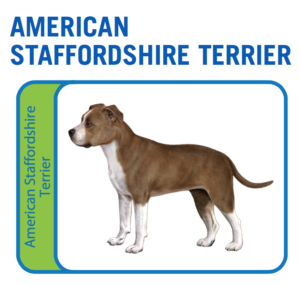My Dog’s DNA Test

This last week, I received the results of my dog’s DNA test. My mom and dad in-law bought me the test for Christmas and I finally got around to testing our pup about a month ago.
My dog is what most people would refer to as a “pit bull,” although that is not really the name of any breed. The United Kennel Club recognizes the American Pit Bull Terrier as a breed. The American Kennel Club only recognizes a similar breed, the American Staffordshire Terrier. An American Staffordshire Terrier is not an American Pit Bull Terrier, however. They are different breeds. Media news outlets have erroneously labeled other breeds like American Bulldogs, Boxers, Cane Corsos, Bull Terriers, and Bullmastiffs “pit bull.” Shelters sometimes label an adoptive dog as a “Pit Bull Mix” without truly knowing its genetic ancestry.
Labeling a dog with a moniker known to raise concern and fear is problematic when trying to find a home for that dog. When an animal has been bred between 18,800 – 32,100 years ago, only molecular testing will reveal that animal’s true evolutionary history.
I wanted to have my dog tested to see if she had any fun surprises in her. We adopted her 2 years ago, at the age of 5, from a local animal shelter and she looks like an American Staffordshire Terrier. I assumed that she was, like most dogs, a mix of something along with Am Staff. I wanted to see her secrets: what was inside her? Chihuahua? Great Pyrenees? Boston Terrier? She did not look like any of those things, but looks are only a small part of an animal’s genetics. Try to guess a person’s heritage based on the color of their eyes and hair. It is not often possible. I am Caucasian with brown hair and blue eyes, and I am a mix of Eastern and Western European and Native American ancestry.
So, what was Charlotte? The results were a little disappointing. She is American Staffordshire Terrier, althoughthe test can only work within the parameters of the database. She could be purebred, or she could have a small percentage of a breed that closely resembles the Am Staff. The test could not positively conclude what breed that might be. I wanted to see diversity! Where was the Great Pyrenees? The Basset Hound? The Dachshund? The test results did say that there is a possibility that she could also have a member of the herding group in her ancestry. And the Great Pyrenees is in that group! But truly, the signals of a particular breed were not possible to determine.
So, does it really matter what breed she is? Yes. My hubby and I wanted to adopt a dog who would have a harder time finding a home. I also love her short coat that is easy to care for. And, I appreciate her love of solving a puzzle toy by breaking it open. (Hey, breaking something until the food spills out is a solution!)
But, as a trainer, breed does not matter much to me. I have seen labradors who do not like water, American Staffordshire Terriers who do not dig, and Shetland Sheepdogs who do not herd. Many breeders today breed dogs based on looks more than personality. And, as we know, both genetics and environment determine any animal’s future, whether dog, cat, or human.
I try to avoid looking at a dog as a breed, and instead look at him as an individual. I need to know a lot more about a dog than his breed to assess him and what he needs from me as a trainer. A dog might have the genetic makeup to look like a beagle, but may act like the mix of dogs he has descended from. As a trainer, I want to understand that there is more to a dog than what I see on the outside. I find this perspective helps me to remain open about the behavior I am seeing in front of me. I do not want to misread something and attribute it to behavior typical of a particular breed.
Even though there were no fun surprises of a recent mixed ancestry, I do like knowing more about our pup. And adding to the database is significant so that more about canine genetics can be understood in the future. The test also gave me information about whether or not she carried a genetic mutation that is found in many herding and mixed-breed dogs (she does not carry it). So, even without a big “ta-da!” in the results, it was an interesting look inside of our healthy dog. I am happy to say that whatever she is, she’s ours.
Lynn Webb, M.A., KPA CTP, CTMT


